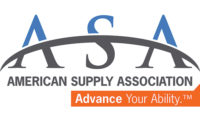In the bustling and dynamic world of the PHCP industry, safety isn't just a buzzword — it’s the bedrock upon which successful operations are built. Amidst the many moving parts, both figuratively and literally, at a wholesale-distribution business, ensuring the safety and well-being of every worker is paramount.
However, achieving this goal isn’t solely dependent on the implementation of safety protocols and checking OSHA’s boxes; it's equally reliant on the steadfast commitment and active involvement of CEOs and owners, and the culture of commitment to safety that they grow and nurture.
In this article, we’ll shine a light on just how important it is for safety to start at the top, and for business owners and principals to champion and support safety at all levels of the organization.
The resounding impact of leadership support
Imagine stepping onto the floor of a warehouse where the CEO doesn’t merely oversee operations from the comfort of the boardroom but actively engages with workers on the frontline, promoting safety as a core value. With each interaction, whether it’s discussing the importance of proper equipment usage or reinforcing the significance of reporting potential hazards, the CEO sets a powerful precedent: safety isn’t just a priority — it’s a non-negotiable requirement.
In any organizational setting, when employees witness their leaders actively embodying and championing cultural principles, like dedication to safety, it not only provides clarity but also signals the value of the underpinning belief that all workers deserve to go home safe each day.
Leaders who walk the talk effectively demonstrate the practical application of cultural values, making them tangible and relevant to everyday operations. It fosters a culture where safety isn’t just a set of rules to be followed but a shared responsibility ingrained in every aspect of the company's operations. From the newest apprentice to the most seasoned technician, every employee understands that their well-being matters and is actively encouraged to prioritize safety.
“While safety is a responsibility of all, it is our commitment at J.H. Larson to provide an atmosphere where everyone feels confident to stand up for safety,” says Luke Pahl, president and owner, J.H. Larson, an ASA member heavily involved in ASA’s Safety Task Group. “This ultimately enhances our morale, well-being, and productivity both at the office and in our personal lives.”
This demonstration creates a ripple effect throughout the workforce, as employees are more likely to emulate behaviors modeled by their leaders. Ultimately, when leaders embody cultural values, they not only shape organizational culture but also cultivate a shared sense of identity and direction among employees, driving collective success.
Leading by example: A catalyst for change
While it can feel overwhelming to grapple with the concept of safety organization-wide, becoming an active leader in safety really can be achievable with a little planning. Here are just a few ideas that can be implemented swiftly and easily to signal your commitment to safety as a leader at your organization:
- Open door policy for safety concerns: Maintaining an open-door policy for safety concerns allows employees to feel comfortable reporting hazards or suggesting improvements directly to leadership. Allow your employees to be part of your safety solution.
- Regular safety walks: Leaders can conduct routine safety walks throughout the workplace to observe potential hazards, address concerns, and engage with employees about safety protocols. This also serves to identify patterns of unsafe behavior or processes, allowing the ability to step in before an adverse event occurs.
- Participating in safety training: Actively participating in safety training sessions alongside employees demonstrates a leader’s commitment to safety education and ensures they are well-versed in the procedures themselves.
- Address employees candidly about safety: Taking charge of safety meetings allows leaders to emphasize the importance of safety initiatives, address any issues, and encourage open dialogue among team members.
- Recognizing and rewarding safety excellence: Acknowledging and rewarding employees who demonstrate exemplary safety practices, such as a safe workspace, proper use of PPE, or correct loading and unloading techniques.
Of course, the strategies above go hand-in-hand with more traditional safety initiatives, such as self-directed safety audits and inspections, safety improvement projects, and emergency preparedness drills for when an even does occur.
Dakota Supply Group (DSG), an ASA member who has been involved with ASA’s Safety Task Group for almost a decade, understands the importance of repeated behaviors that instill safety across the organization:
“DSG has a multi-layered approach to safety communication,” said Paul Kennedy, president and CEO of DSG. “By delivering frequent touchpoints to convey trends, best practices, and systematic improvements, we continue to see safety culture elevated at every level of leadership, ensuring our employee owners return to their families at the end of the workday in better health than they arrived.”
Pahl, also notes, “Our number one asset is our people, and it is critical to our organization that all employees and customers go home safely at the end of each day. We focus on this through various avenues — including training, team huddles, equipment maintenance, and consistent feedback from our teams.”
The high stakes of inaction
Conversely, the consequences of neglecting safety can be severe. In companies where CEO or leadership buy-in is lacking, safety protocols often become mere lip service, disregarded in favor of expedience or cost-cutting measures. This disregard for safety not only jeopardizes the well-being of employees but also exposes the company to legal and financial liabilities in the event of accidents or workplace injuries.
Beyond tangible loss of life or injury, the erosion of morale and trust within the workforce can have far-reaching implications when a safety event occurs. Employees who feel their safety concerns are ignored or undervalued are less likely to be engaged or motivated, leading to decreased productivity and increased turnover rates.
Moreover, a tarnished reputation resulting from safety violations can deter potential clients and partners, eroding trust and credibility in the marketplace.
A call to action
It’s time to prioritize safety at every level of your organization. As a leader, you have a responsibility to ensure the well-being of employees and the communities we serve. Safety isn't just a compliance issue; it’s a fundamental aspect of ethical leadership and sustainable business practices. We cannot afford to overlook the devastating consequences of neglecting safety initiatives.
By taking these steps, we can create safer workplaces, enhance employee well-being, and build stronger, more resilient organizations. Let’s lead with integrity, compassion, and a steadfast commitment to safety. Our employees, our communities, and our future depend on it.
ABOUT THE AUTHORS:
ASA’s Safety Task Group helps create and support a culture of safety among our members, their employees, and industry participants that will minimize the frequency and severity of accidents and to identify corrective measures needed to eliminate or control recognized safety hazards.




